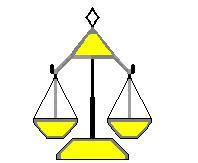|

A just weight and balance...












| |
| |
|
Orifice Meter Objectives: Flow Profiles
The main objective when using an orifice type meter is to maintain the
correct flow profile. Initially, the original coefficients of
discharge were determined under laboratory-specific flow conditions. Any
altered condition that changes the flowing profile from the original
profile must not be allowed or error will result. In the diagram below three
profiles are displayed:

 | The center (red)
profile represents the laboratory condition where virtually no error
occurs. Manufacturers of orifice meter tubes must follow strict guidelines
established by the AGA, ISO and other organizations. Some states ratify
these standards which means that gas or liquid contracts within those
states are governed by the state laws whether or not these are referenced
in the contract. |
 | The left (blue) profile indicates gas steamlines
moving much faster toward the center of the flow stream than at the outer
edge. This causes gas to rapidly move through the orifice creating less
differential pressure than the laboratory condition resulting in an
understatement of gas or liquid flow. |
There are many causes for this problem. Contaminates of
most any kind can create drag on the surface of the pipe wall, much like
debris in the edge of a stream of water. Oil, water, emulsion, dirt, iron
sulfide, salt, sand, paraffin, rust or pipe scale, large amounts of glycol
are often found in gas flow streams.
 | The right (yellow)
profile is very blunt, indicating stream lines flowing at the outer
edge of the flow stream are traveling almost as fast as the center
streamlines. This condition causes excess differential pressure resulting
in an overstatement of gas or liquid flow. |
Causes of blunt profile: For gas flow, very thin layers
of liquid such as glycol, coat the inside of the pipe wall creating an ultra
smooth surface. If the fluid is thick enough to cause ripples as the gas
passes by then the effect is canceled to some degree.
|
|